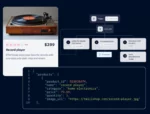With the pressures to get software to market faster, many companies have turned to Continuous Delivery (CD) strategies. CD is a practice designed to improve, automate and speed up the software delivery process—and according to one survey, its adoption rates are beginning to soar.
(Related content: Seven steps to continuous delivery)
Perforce Software announced researching findings on CD that show that not only are more people using CD, but it is also breaking out of the Software-as-a-Service (SaaS) barrier and becoming a new norm for software development.
“More and more companies are shifting their build, test and release processes to Continuous Delivery in order to meet the heightened expectations customers have for receiving better products faster,” according to Christopher Seiwald, founder and CEO of Perforce.
The report, “Continuous Delivery: The New Normal for Software,” commissioned by Perforce and fielded by Evans Data Corp., found that 37% of participants are using CD on some projects; another 28% are practicing it across all their projects; and nearly half believe their competitors are applying it also.
One of the key findings the report found was that CD is breaking out of the idea that it is only for SaaS companies. Eighty percent of SaaS companies reported an adoption of CD practices, according to the report, but non-SaaS companies are catching up with 51% indicating CD adoption across projects or teams.
Other key findings include:0
• SaaS companies believed their biggest CD adoption barrier is not having skilled people
• Non-SaaS companies believe their biggest CD adoption barrier is the integration of automation technologies
• Collaboration platforms are critical to CD success
• An organization’s corporate culture is the least ready for CD adoption
It is also important to note that the survey suggested that definitions of CD vary. An open-ended survey question asked respondents what CD means to them, and the majority of responses placed it into any or all of four categories: Automation, Time, Continuity and Process.
The report findings come from surveying 600 software developers, managers and executives throughout the United States and United Kingdom.






